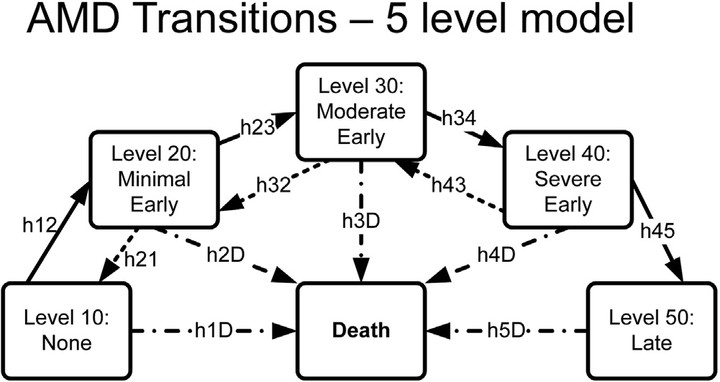
Abstract
PURPOSE: To examine the relationship between serum oxidized low-density lipoprotein (ox-LDL) cholesterol and the incidence of age-related macular degeneration (AMD) over a 25-year period in a sample of persons from the population-based Beaver Dam Eye Study (BDES). DESIGN: Observational prospective cohort study. PARTICIPANTS: A total of 4972 people from the BDES (aged 43-84 years and living in Beaver Dam, Wisconsin in 1988) seen during at least 1 of 6 examination phases at approximately 5-year intervals between 1988 and 2016. METHODS: A 50% random sample of participants (N = 2468) was selected for ox-LDL measurements. Stored frozen specimens from every examination phase were processed using an enzyme-linked immunosorbent assay from a single batch. All available intervals were included for a person, resulting in 6586 person-visits. MAIN OUTCOME MEASURES: Age-related macular degeneration was assessed using the Wisconsin Age-related Maculopathy Grading System, and severity was defined using a 5-step severity scale. The severity of the worse eye at each examination was used for analyses. A multi-state Markov (MSM) model was fit to simultaneously assess the ox-LDL relationship to all AMD transitions, including incidence of any AMD, incidence of late AMD, and worsening and improvement of AMD over the 25 years of the study. RESULTS: The mean (standard deviation) level of ox-LDL was 75.3 (23.1) U/L at the baseline examination. When adjusting for age, sex, ARMS2 and CFH risk alleles, and examination phase, the ox-LDL at the beginning of a period was not statistically significantly associated with the incidence of any AMD (hazard ratio per 10 U/L ox-LDL was 1.03, 95% confidence interval 0.98,1.09). Furthermore, ox-LDL was not associated with worsening anywhere along the AMD severity scale, nor with incidence of late AMD. The lack of relationships of ox-LDL to the incidence of any AMD or worsening of AMD remained after adjustment for history of statin use, smoking status, body mass index, and history of cardiovascular disease (data not shown). CONCLUSIONS: Our findings do not provide evidence for statistically significant relationships between ox-LDL and AMD disease development or worsening of AMD.